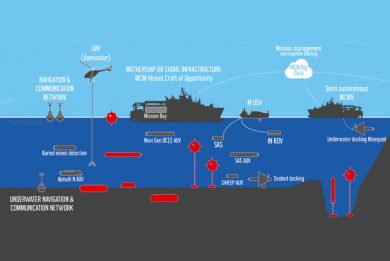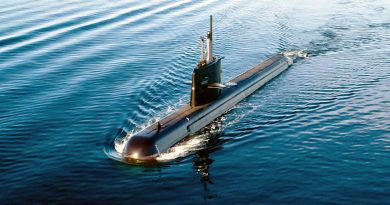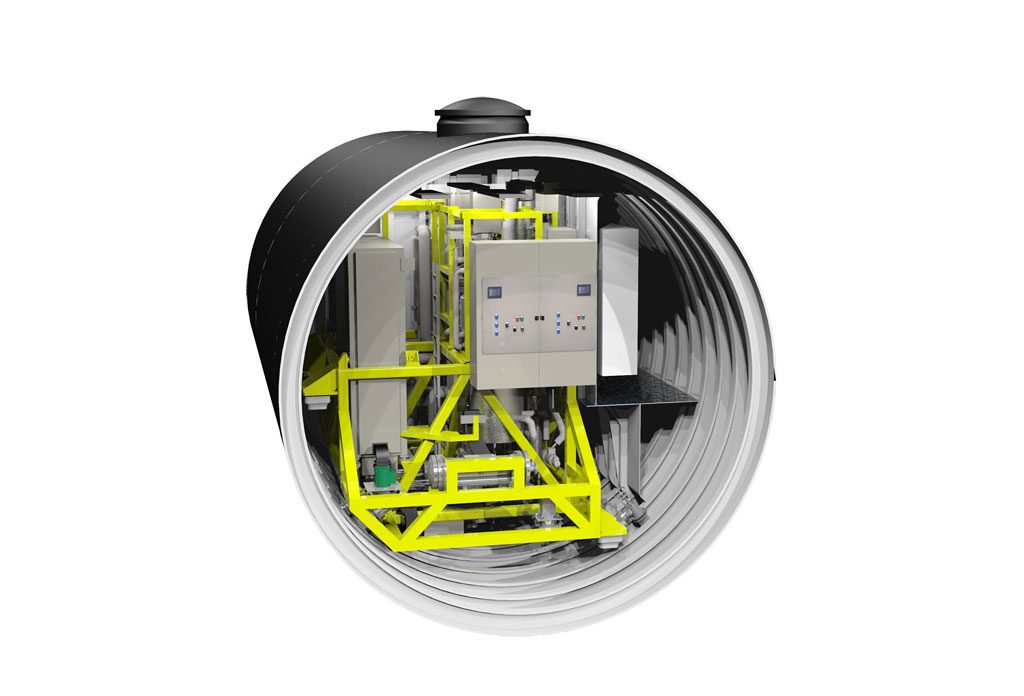
Naval Group’s FC2G AIP is ready to sail
4 September 2019
By Luca Peruzzi
The recent announcement of the achievement of another major milestone in the maturation of its new generation FC2G (Fuel Cell 2nd Generation) Air Independent Propulsion (AIP) system, has highlighted new technological breakthrough in its development and qualification process.
“The new FC2G is today ready to sail and is being proposed on the international market”, has confirmed Anthony Covarrubias, Naval Group Marketing Department, to EDR On-Line, after having announced that the system reached 18 days patrol in representative operational conditions at the Group’s Nantes-Indret facilities near Nantes.
“The FC2G AIP needed a decade of research, development and test but is now ‘ready to sail’”, he remarked to EDR On-Line. Naval Group has developed what the French group claims the first fuel reformed-based AIP in the world. Studying and working on the different solution related to the AIP and based on the challenges and previous work accomplished with the MESMA system, the first generation AIP developed by Naval Group, the shipbuilder group has chosen the technology to produce onboard hydrogen using fuel reforming based on diesel-oil.
“In order to accomplish all operational and logistic needs on the reforming process, the selection of the adequate fuel was the big challenge. Five criteria were used, taking into account both safety and performance: storage safety, hydrogen energy and density in the selected fuel, hydrogen production complexity, integration volume and availability”. After a long analysis, considering several test and safety standards, it appeared that diesel-oil was the most suitable option, as “it has the highest point of ignition, decreasing the risk of fire (safety), is the least toxic fuel for the exposition of the crew (safety) and is easy to handle in terms of loading and unloading procedures on board (security/logistics). Moreover, it has better energy response and hydrogen density (performance) and has worldwide availability with high purity standards (logistics/operational), among main benefits”, Anthony Covarrubias said.
Naval Group has been working on the system from almost a decade and has invested a lot in developing this capability and related technologies with extensive testing on a full-scale shore demonstrator at Nantes-Indret, which has so far logged over 6,000 hours – the equivalent of six years’ of a submarine operational cycle – including tests replicating a range of operational mission scenarios and profiles and over 70 patents.
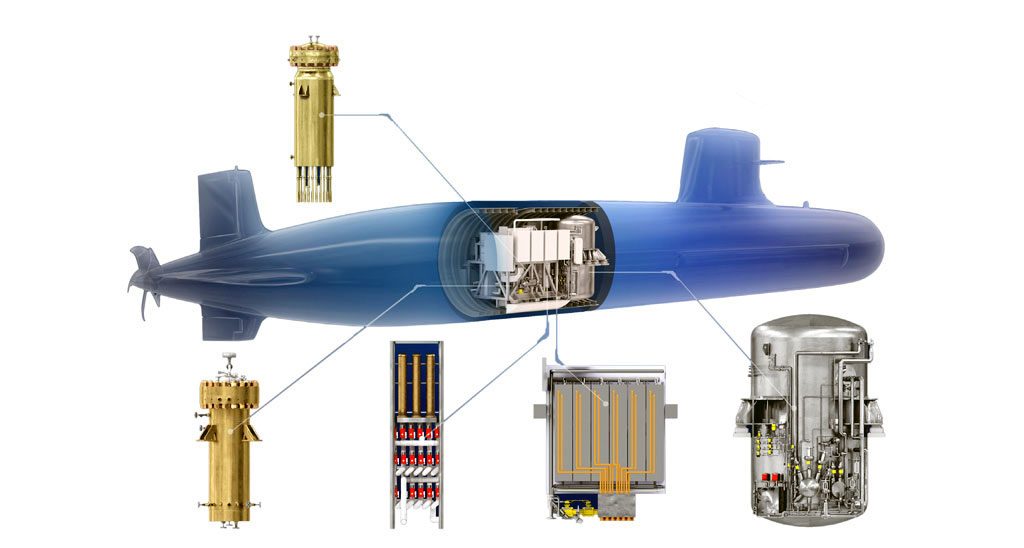
In its final design, the FC2G AIP is packaged in a module as a dedicated hull section about 8 meters in length and suitable for either new-build boats or mid-life upgrading programmes. The design can be tailored to any hull that is at least 6 meters in diameter, including Naval Group’s Scorpene SSK, without compromising the boat’s dive capabilities or acoustic discretion. The FC2G AIP can be adapted and is being studied for bigger hulls (diameter) typical of large oceanic, conventionally-powered submarines. “The FC2G AIP is today being offered for Naval Group’s conventionally-powered submarines”, explained the Naval Group representative.
“It is important to consider that this new generation of AIP is like another ordinary source of energy for a submarine. In combination with batteries, the FC2G AIP will be able to accomplish the always complex and challenging submarine warfare in a completely different mindset”, he continued.
The FC2G AIP comes in a module divided into two sections, the Oxygen and the Energy modules. The first accommodates the liquid oxygen storage which feeds both the AIP system as well as providing submarine atmosphere regeneration, while the second holds the four main elements of the FC2G AIP module: the reformer, the shift reactor, the purification membrane and the PEM (Proton Exchange Membrane) air fuel cells. All the components are integrated on a dedicated section with elastic mounting and suspended cradles to avoid any impact on the acoustic signature. The FC2G AIP module also includes a personnel side-walk passage providing access to other submarine compartments as well as to the module itself for maintenance activities. Naval Group is also working and studying solutions to reduce the diameter of the module by installing the oxygen module in an horizontal instead of the vertical position as is in-today configuration, to insert the FC2G AIP module in smaller diameter hull submarines.

“The hydrogen production process relies on three main steps: fed with diesel oil from submarine fuel tanks, oxygen (from the oxygen storage FC2G module) and steam, the latter recycled in the process, the reformer converts this mixture into a hydrogen-rich synthetic gas containing hydrogen, carbon dioxide and carbon monoxide plus water in the steam phase. The process residual gas is expelled into the sea where it dissolves instantaneously, thus preserving the submarine’s acoustic discretion. The synthetic gas then passes into the shift reactor where the steam drives a “Water-gas Shift” reaction, that performs the carbon monoxide conversion, generating hydrogen, carbon dioxide and water. Consequently, it increases the hydrogen content of the synthetic gas to the maximum available, along with the almost complete elimination of carbon monoxide”, he explained, adding that the shift reactor is characterized by high compactness and thermal efficiency.
Using unique properties of special alloys, the membrane extracts hydrogen from the synthetic gas to feed the Fuel Cells with ultrapure hydrogen, without the need of storage. Hydrogen is thus produced on-board and on demand to be used to produce energy through the Fuel Cells. “The system is particularly silent and contributes to submarine discretion”, Marc Quemeneur, Naval Group’s AIP expert highlighted.
Fuel Cells are based on industrial technologies and adapted for submarine application “by a Naval Group partner” which remains undisclosed. To improve durability and cost the Fuel Cells are fed with the hydrogen produced on board and with air, which allows using standard Air Proton Exchange Membrane Fuels Cells technologies. To do so the Fuel Cells are fitted with an “Air Loop” that is initially loaded with air, which is a mixture of around 78% Nitrogen and 21% Oxygen. While running the Fuel Cells consume the oxygen for electricity production, the nitrogen being expelled in the opposite side of the Air Loop. The latter is then recycled and mixed with oxygen coming from the submarine storage, so as to recreate air which is then injected in the Fuel Cells, this recycling system allowing avoiding the need of a nitrogen storage.
The latest FC2G AIP maturing step achievement was reached last March but was announced only recently. “We conducted a long-term test with a true submarine operational profile, which allowed us to confirm a submerged duration of up to three weeks, the optimization of the maintenance cycle, and the performance of our major components”, said Naval Group in a statement released to the press.
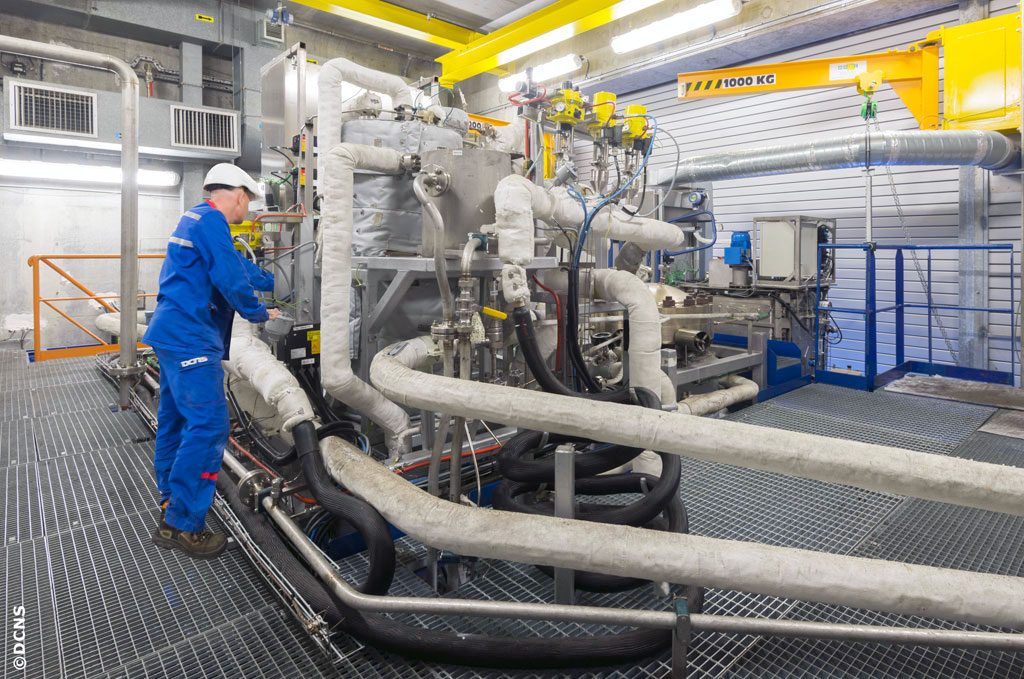
“The 18 days patrol was conducted at Nantes-Indret ashore demonstrator facility in representative operational conditions including the FC2G AIP provision of continuous electrical production from diesel oil reforming, environmental high pressure (compatible with maximal immersion of the submarine) close to submarine environmental conditions and safety requirements, connected to submarine batteries and controlled by only one operator as it will be on board through the Integrated Platform Management System (IPMS)”, explained Anthony Covarrubias-Castro.
The same long-term test also provided the successful demonstration of new technologies applied to the FC2G AIP. “We were able to reduce the overall system signature thanks to hydrogen recovery efficiency improvement (above 99%) and trials of silent pumps. We demonstrated the capability to allow several start-and-stop per patrol according to submarine typical missions. We also achieved a reduction in the maintenance activities thanks to catalysts and diesel oil reforming system endurance improvement. We finally introduced improved Fuel Cells (compactness, easy maintenance, low fuel consumption) with a lifetime increased thanks to a purity of more than 99,999% of the hydrogen produced (better than any hydrogen storage solution)”, Naval Group said. “Moreover, industrialization studies confirm that the Naval Group AIP can be integrated whatever the SSK. Additional tests will be conducted throughout 2019”, Marc Quemeneur explained.
Photos and pictorials courtesy Naval Group

